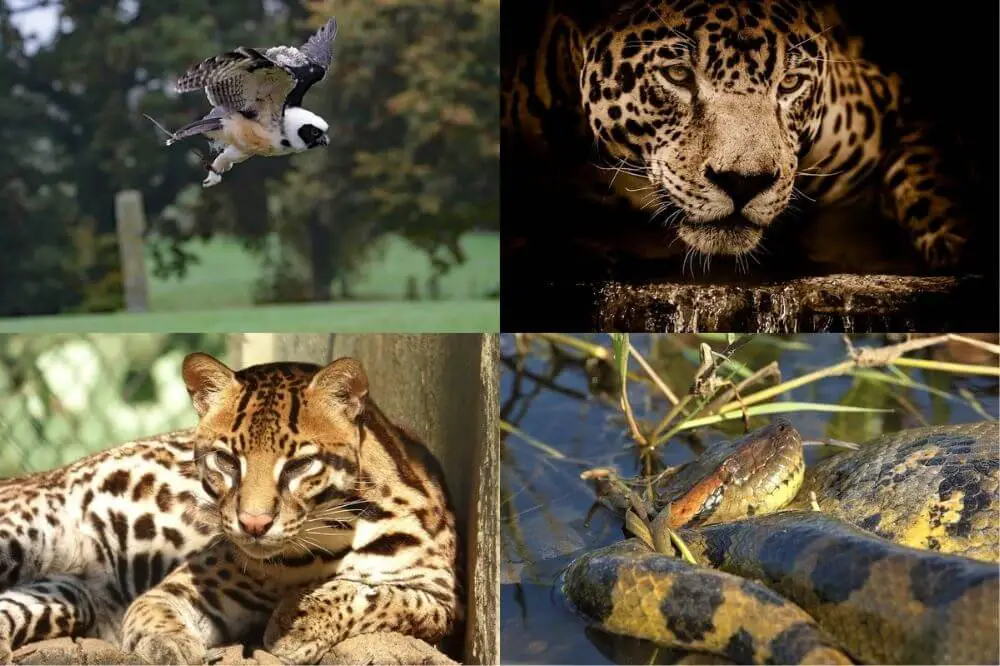
Sometimes, they fall from trees into rivers and swim with their long arms. Sloths are not good at walking on land, but they are good at swimming in the water. So they have to try to defend themselves by scratching or biting. If these animals are on land, they have no chance to get away from big cats. They dig with their front claws and then drag their bellies using their powerful front legs. Sloths have poor hind legs and lengthy claws. Baby three-toed sloths cling to their moms for the first few months of their life. When they are giving birth, they may even do so from a limb. At night, they consume leaves, shoots, and fruit from the trees and get almost all of their water from juicy plants. Every day, they sleep for 15 to 20 hours. Their claws assist them in gripping branches, and they can even hang from them after they are dead. Pygmy three-toed sloths live in the trees and spend a lot of time there. The pygmy three-toed sloth’s algae grow throughout childhood and are most likely passed from parent to youngster. There is a kind of green algae found in the fur of the pygmy three-toed sloth that serves as camouflage without harming the animal. Rats, on the other hand, due to their robust hides, powerful grips, and exceptional healing abilities, can generally withstand assaults. Since pygmy three-toed sloths move so slowly, they use camouflage and stealth to protect themselves. Sloths usually only go to the ground when they need to do their business, which can happen up to seven days after they’ve last gone. The pygmy three-toed sloth is only one of four members in the three-toed sloth group Bradypus. It shrinks the size of its already limited living space.īecause of an island dwarfism phenomenon, pygmy three-toed sloths are the tiniest member of their species. The pygmy three-toed sloth’s biggest worry is habitat loss. The sloth is a slow mover and excels at life in mangroves. For 9,000 years, it has been detached from mainland Panamanian. The pygmy three-toed sloth is native to Isla Escudo de Veraguas, which is part of the Republic of Panama. The sloths live only in red mangroves as a type of terrain found in a narrow band along the seaside, which are estimated to cover just 1.5 square kilometers. Separated from the Panamanian coast by 17 kilometers of ocean, the island of Escudo de Veraguas is the only home of the pygmy three-toed sloth. The young sloth may remain with its mother for up to a year, during which time its fur acquires the species’ signature symbiotic algae from the colonies growing on her hair. The female has one offspring, rarely twins, who cling to her underside for the first period of their lives. Loud vocalizations enable the male and female to find each other in their leafy habitat. Sexual maturity is probably reached at around three years, and young are born after a gestation of six to twelve months. The mating behavior of these sloths is a mystery, but scientists believe it is the same as that of other sloths. Their sole food is the leaves of the red mangrove trees where they live.

They often hang upside down from branches while in the trees. In the trees, they hook themselves securely to branches with the three large claws on each of their feet. They can only crawl while on the ground, though they are good swimmers. Pygmy three-toed sloths spend most of their lives in trees, though they must descend to the ground to urinate and defecate. There is long hair on this sloth’s head, hanging down and giving the appearance of a hood, inspiring the alternative name of “monk sloth”.Ī unique species of symbiotic algae grows in the fur of the pygmy three-toed sloth, giving their fur a greenish tint that acts as excellent camouflage when combined with their slow movements.
#Sloth predators Patch
The sloth’s fur is grey, though the face is tan with chocolate stripes, and the male has an orange patch on the back divided lengthwise by a black stripe. Weight is just 2.5 to 3.5 kilograms, while length ranges from 48 to 53 centimeters. These sloths look compact and are approximately 40% smaller than the mainland sloths they are descended from. Pygmy three-toed sloths are an excellent example of insular dwarfism, which occurs when a population is confined to an island and must adapt to the limited resources of space and food.


 0 kommentar(er)
0 kommentar(er)
